|
New!

Format(s):
SIG Perspectives
The consequences of hearing loss go beyond challenges in speech understanding. Individuals with hearing loss often report listening-related stress and cognitive-communication difficulties. These issues primarily arise from the increased cognitive demands required to perceive and decode speech in complex listening environments. This SIG 7 activity synthesizes findings from two research studies evaluating these listening stress and cognitive-communication difficulties. One study addresses the presence of greater cognitive-communication difficulties in individuals with mild TBI and the ther provides ways to use wearable sensors in evaluating listening-related stress. Lander and Roup (2024)’s work demonstrates that adults with mild traumatic brain injury (mTBI) who also report hearing difficulties experience significantly greater cognitive-communication challenges and perform worse on speech-in-noise tasks compared to both healthy controls and those with mTBI alone. The findings point towards a compounded burden of cognitive and auditory strain that may not be evident in standard clinical assessments. This reinforces the need for patient-reported measures to better inform targeted intervention strategies. In parallel, Sarangi and Johnson (2024)’s study discuss the feasibility of using wearable sensors to objectively assess listening-related stress in healthy young adults with normal hearing. Their study reveals that difficult listening conditions, characterized by low signal-to-noise ratios, unpredictable sentences, and negative feedback (conditions often associated with increased listening stress among individuals with mTBI and/or hearing loss), lead to measurable changes in heart rate and respiration, indicating increased stress. However, low or lack of agreement between wearable and lab-grade sensors highlights the importance of methodological rigor in capturing physiological markers of listening effort. Together, these studies converge on the key insight that hearing loss can present with complex communication-related difficulties. For individuals with auditory or neurological vulnerabilities, such as mTBI r subclinical hearing difficulties, a compounded listening load may exacerbate fatigue, anxiety, and social withdrawal. Therefore, advancing bothsubjective screening tools and real-time physiological monitoring, especially with wearable technologies, holds promise for developing more holistic, personalized approaches to auditory rehabilitation and cognitive-communication support.
New!
Format(s):
SIG Perspectives
One way to address the multifaceted nature of hearing loss is through group auditory rehabilitation (AR) programs. However, there is a lack of consistent, up-to-date evidence on their design, content, and effectiveness. This SIG 7 activity synthesizes findings from a scoping review and a program evaluation study to examine the landscape and efficacy of group-based AR for older adults with hearing loss.
Format(s):
SIG Perspectives
This SIG 7 Perspectives course includes two articles. The first article examines a new pediatric speech in noise screener that can be used as an app, and the second article looks at quality-of-life outcomes after cochlear implantation.
Format(s):
SIG Perspectives
These SIG 7 articles discuss the accessibility and effectiveness of digital platforms to provide auditory rehabilitation services for adults and children with hearing difficulties.

Format(s):
SIG Perspectives
These SIG 7 Perspectives articles focus on auditory rehabilitation (AR) for adults with cochlear implants. While the benefits of AR in the population are recognized in the literature, service-delivery models are variable, and there is no gold standard approach to developing and implementing a comprehensive AR program. Glade and colleagues provide an overview of clinical models currently being used for the provision of AR for adults with cochlear implants from nine clinics across the country. The article highlights the importance of interprofessional practice in AR and outlines the roles of professionals included on care teams. There is a discussion about barriers to successful implementation of AR programs, including distance to services, and recommendations for potential solutions, such as teletherapy. In the second article, Mosley describes the process of creating and implementing a comprehensive teleaudiology AR program for older adults who use cochlear implants at the University of South Alabama Speech & Hearing Center.

Format(s):
SIG Perspectives
How can audiologists enhance patient-centered communication, even during the COVID-19 pandemic? This self-study is from the journal, Perspectives of the ASHA Special Interest Groups, SIG 7: Auditory Rehabilitation and Its Instrumentation. It features two articles focused on patient-centered strategies for effective communication, from initial consultations to prioritizing follow-up care, during COVID-19. It also includes the article that won the 2021 ASHA Journals Editor’s Award for Perspectives (for SIGs 6, 7, 8, and 9) by Davidson and Marrone.
The first article is, “How to Provide Accessible Hearing Health Information to Promote Patient-Centered Care.” Kelly-Campbell and Manchaiah review the literature within audiology on patient-provider communication. They focus on research studies of communication during initial audiology consultation sessions. Through a summary of themes in the literature, they categorize important research findings that provide insight into communication between patients and their audiologists. Finally, they identify five key strategies for effective patient-centered communication. Each strategy is then reviewed in detail, with clinical examples and specific recommendations that can be immediately
implemented in practice.
The second article is, “A Clinically Valuable Interaction in the Midst of COVID-19 and Beyond: A Viewpoint on the Importance of Patient-Centered Outcomes in Rehabilitative Audiology.” Davidson and Marrone discuss patient-centered communication following hearing aid device fittings. They identify challenges facing patients and audiologists related to follow-up hearing aid services as a result of the COVID-19 pandemic. Based on a literature review and their own recent research, they developed a decision-tree algorithm to help audiologists prioritize clinical activities following hearing aid fittings, including remote formats for care. The algorithm was based on use of a patient-centered outcome measure, the Measure of Audiologic Rehabilitation Self-Efficacy. Patient-centered outcomes measurement is suggested as an engagement strategy for continued communication with patients during the COVID-19 pandemic and beyond.
|

